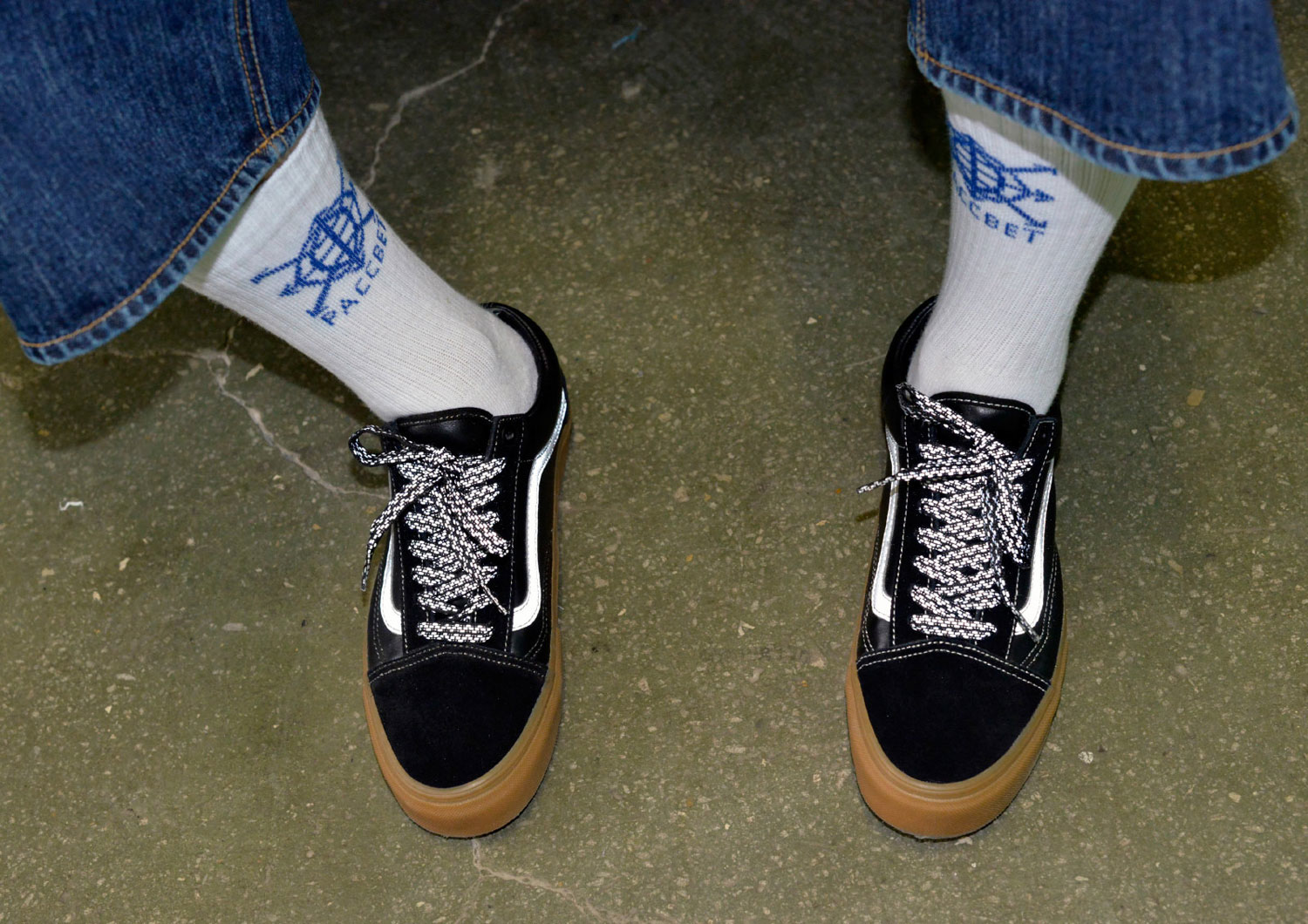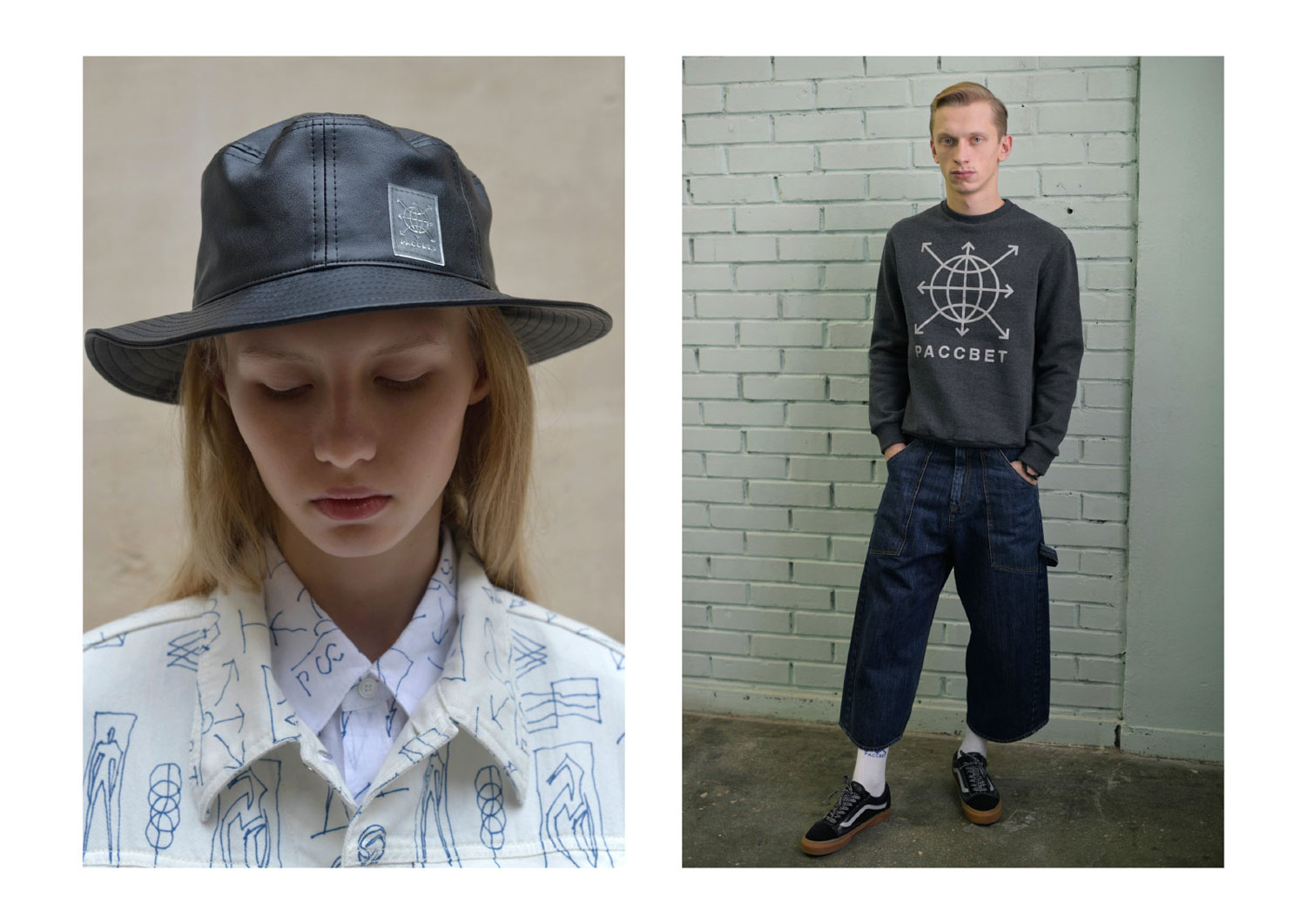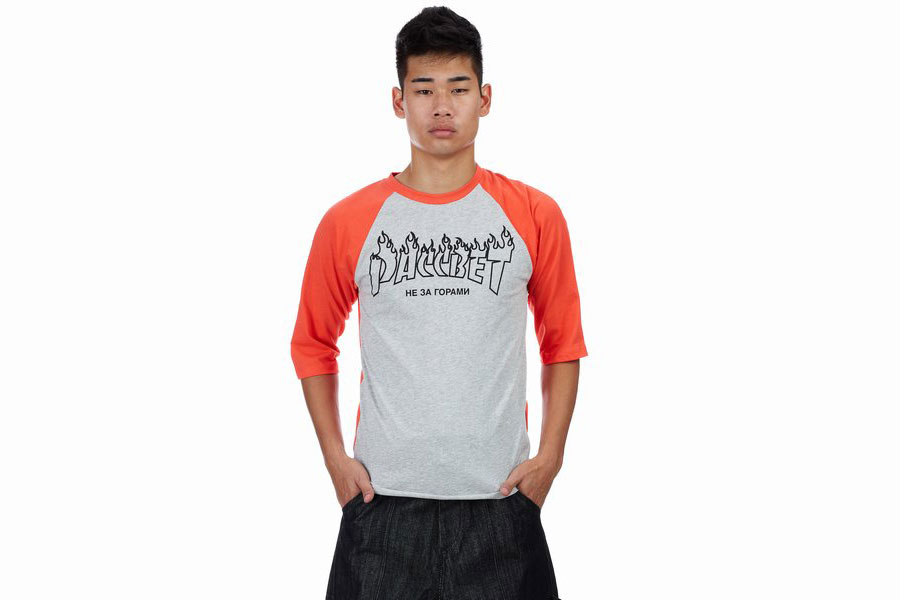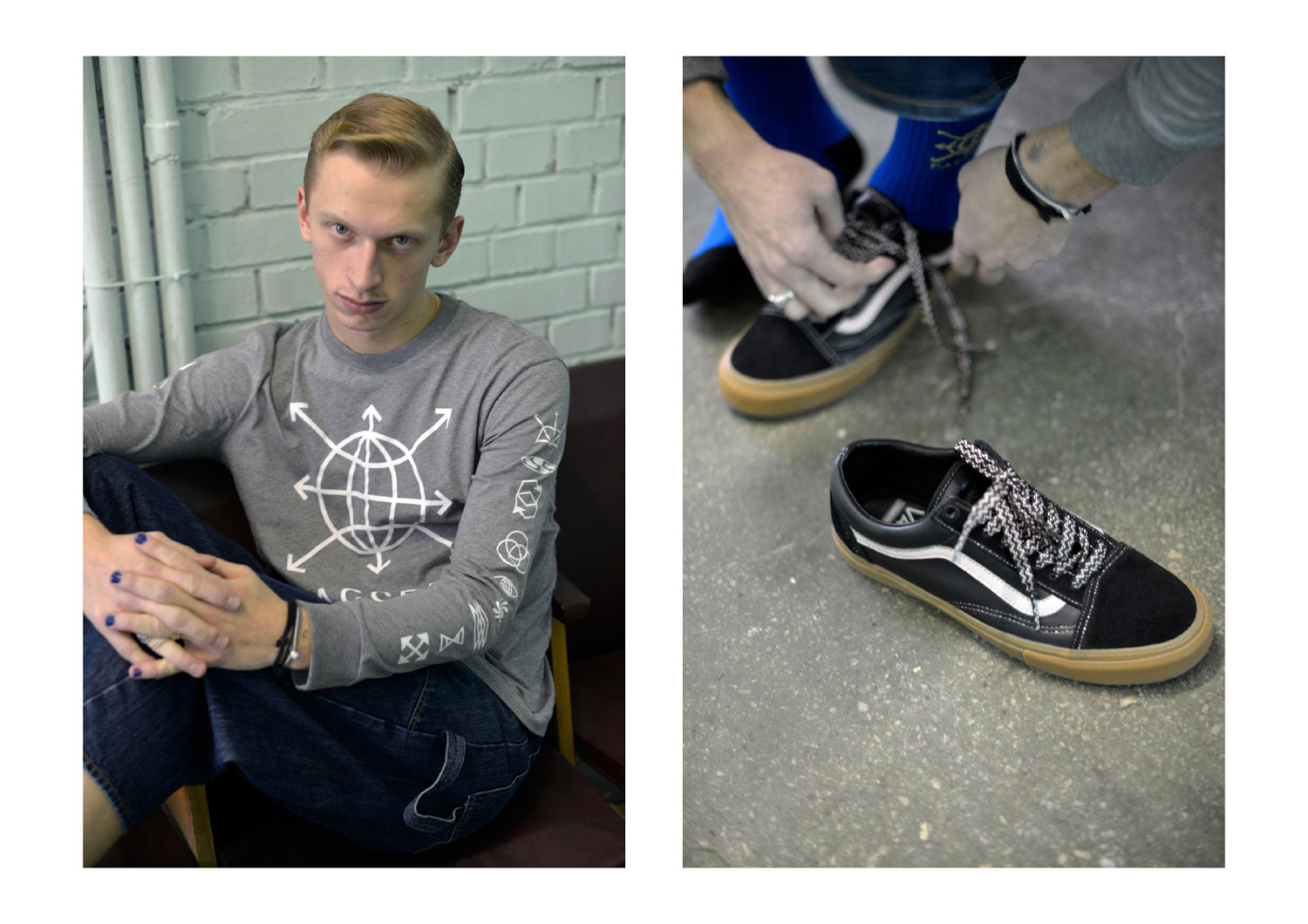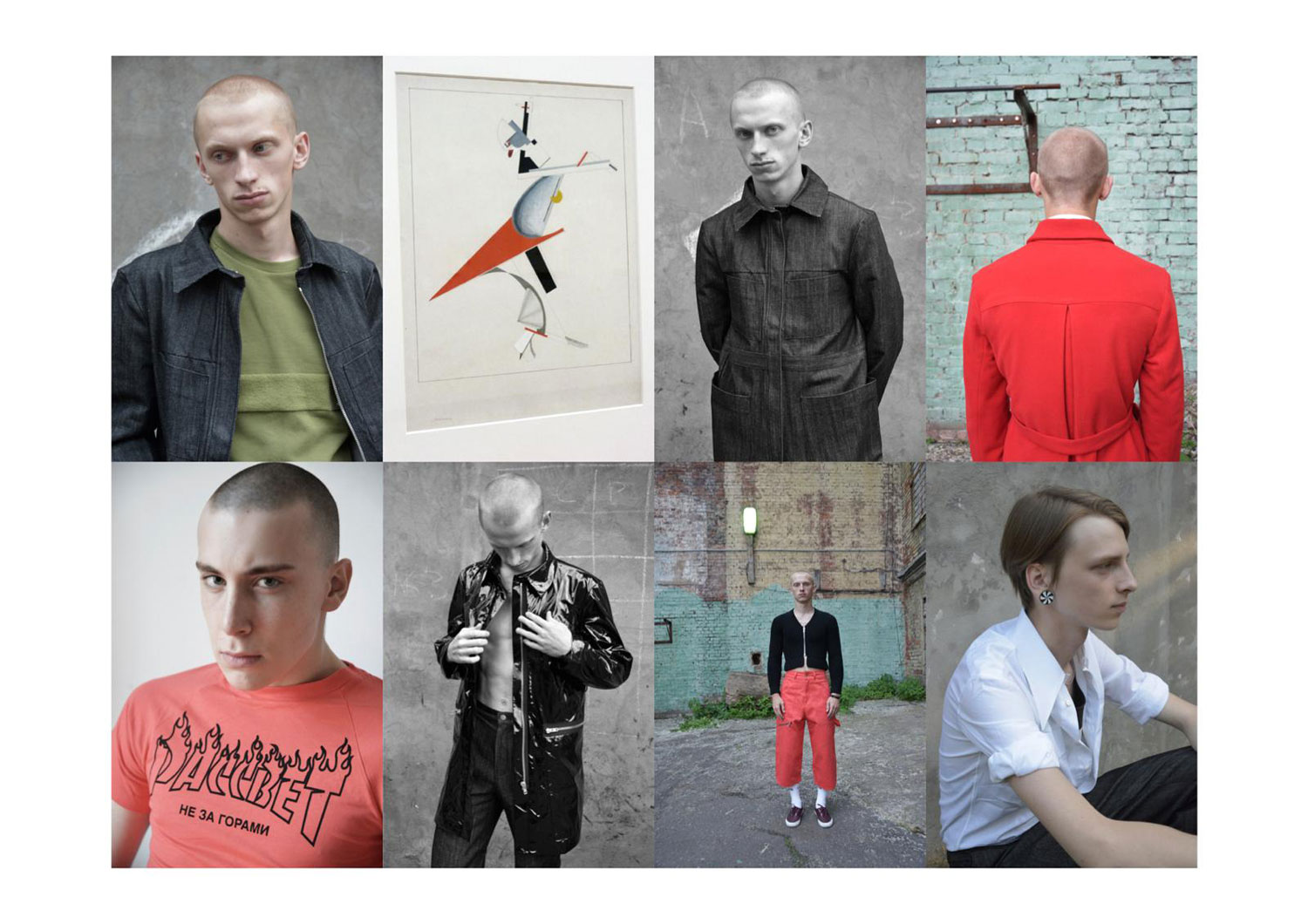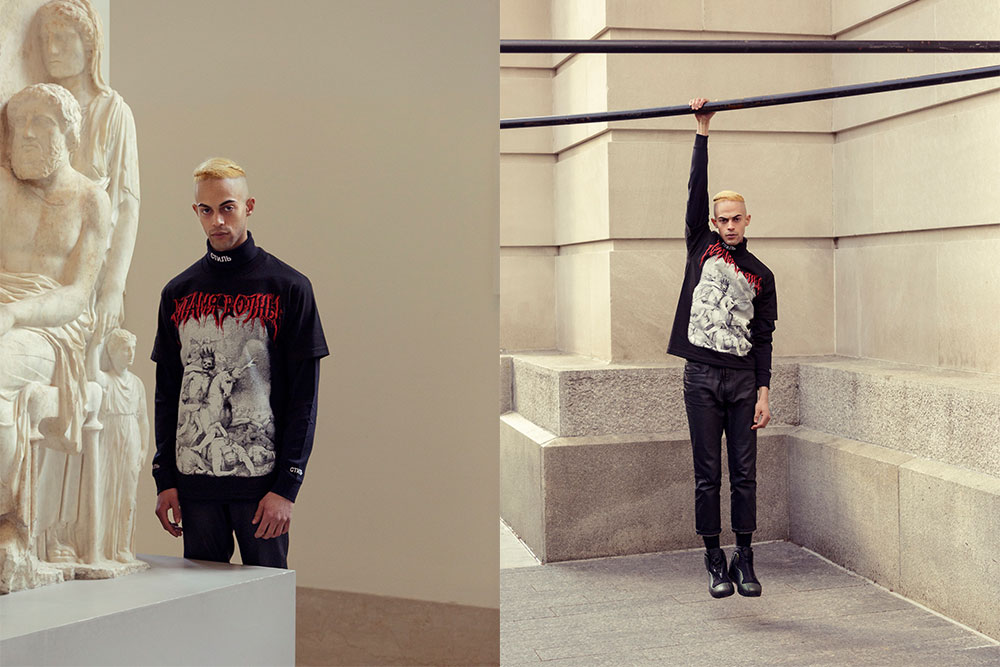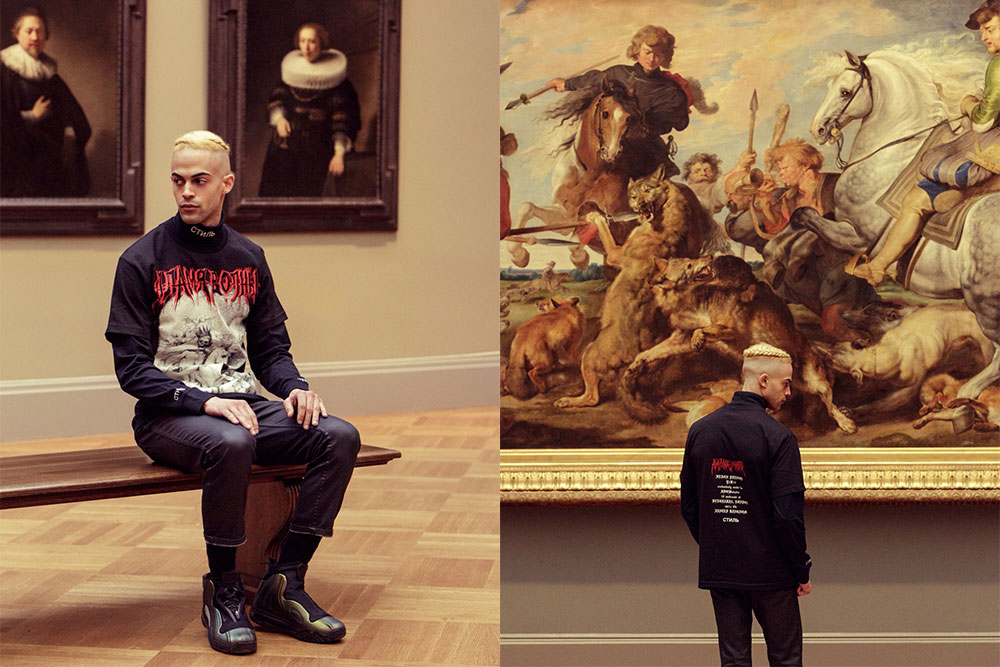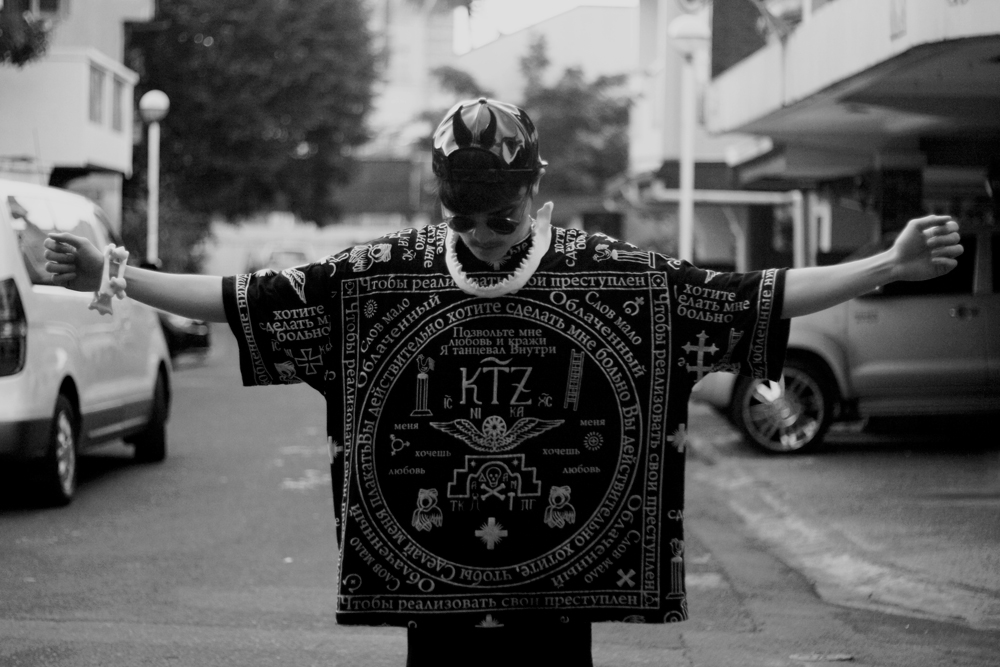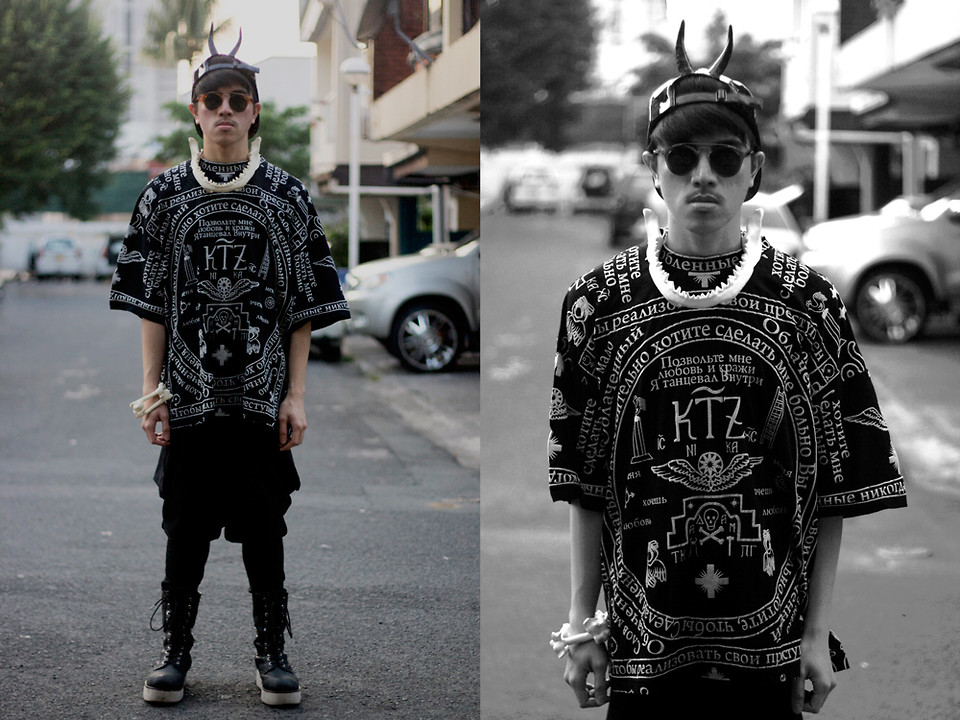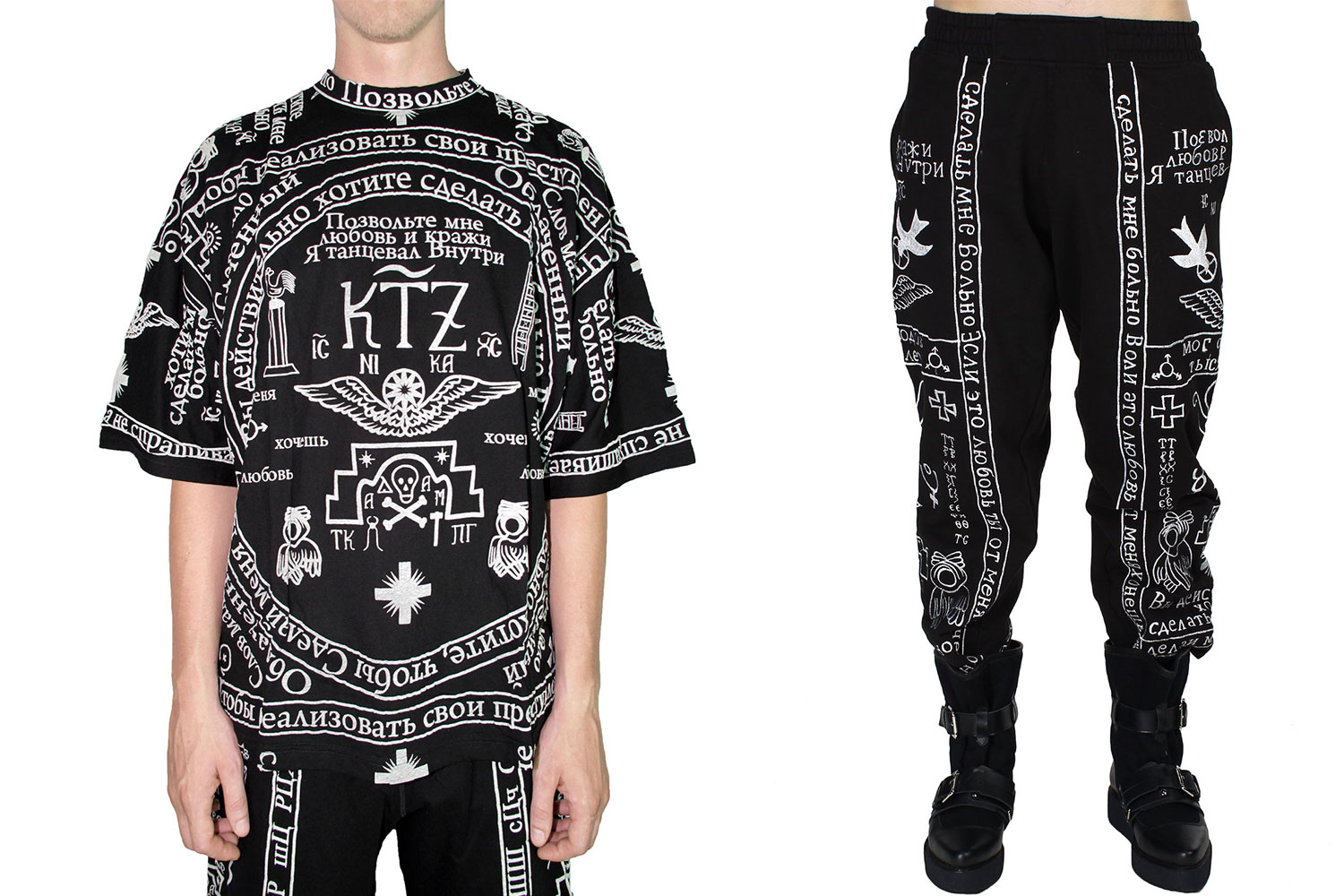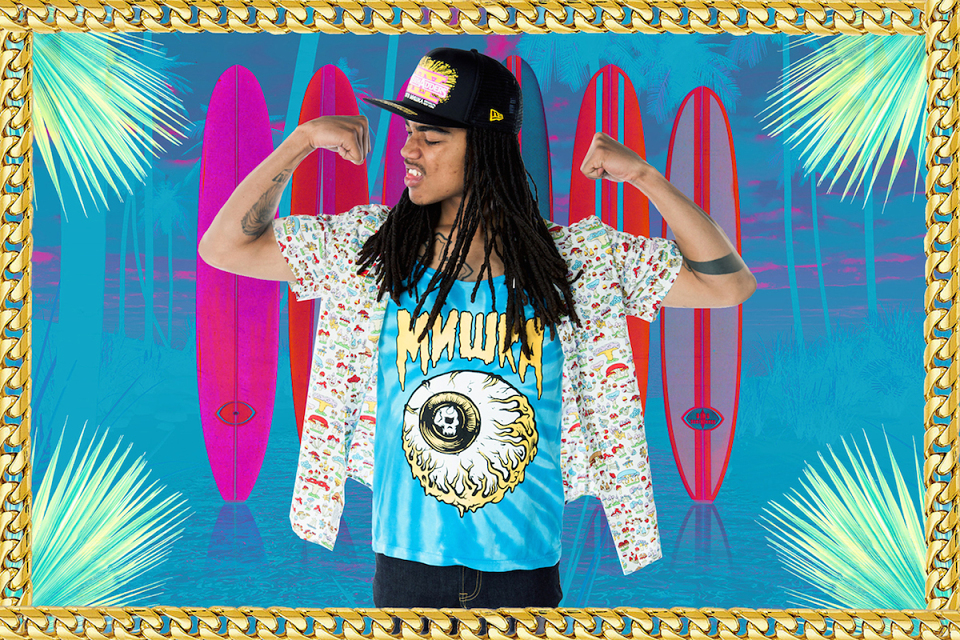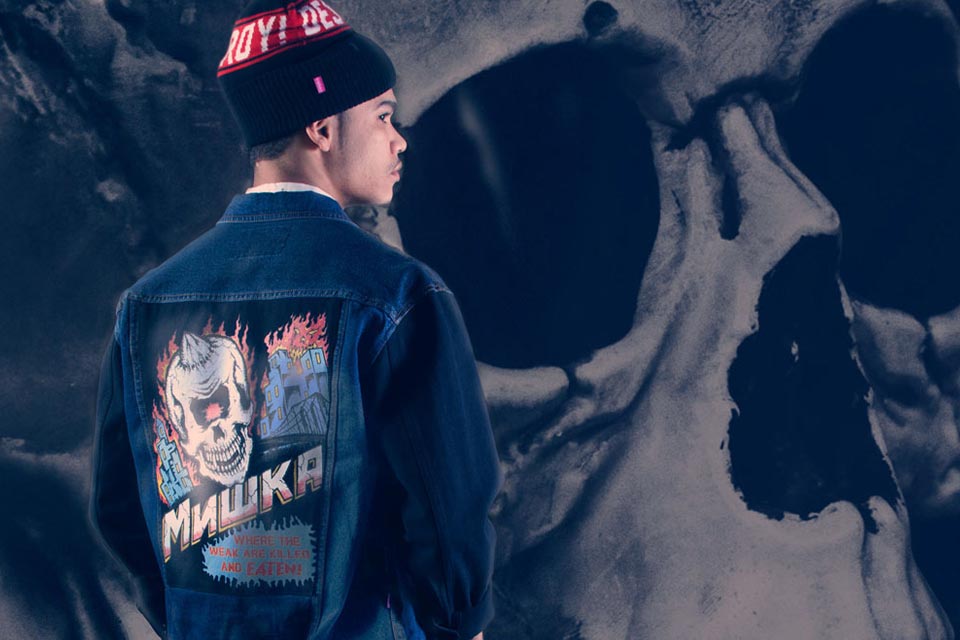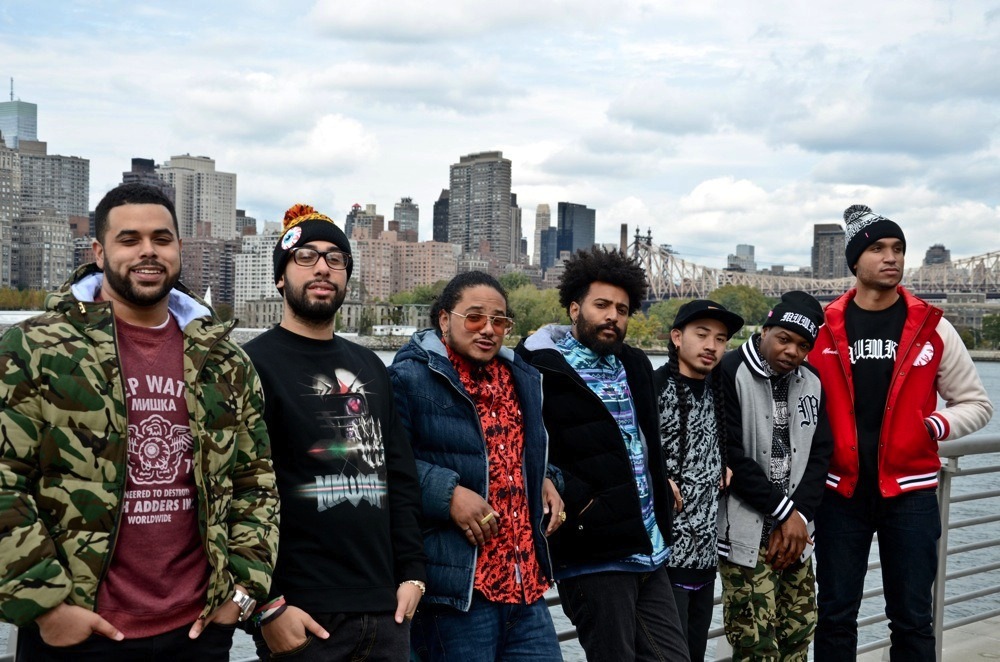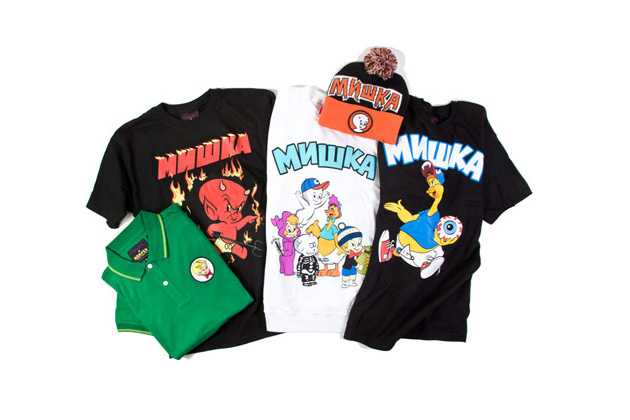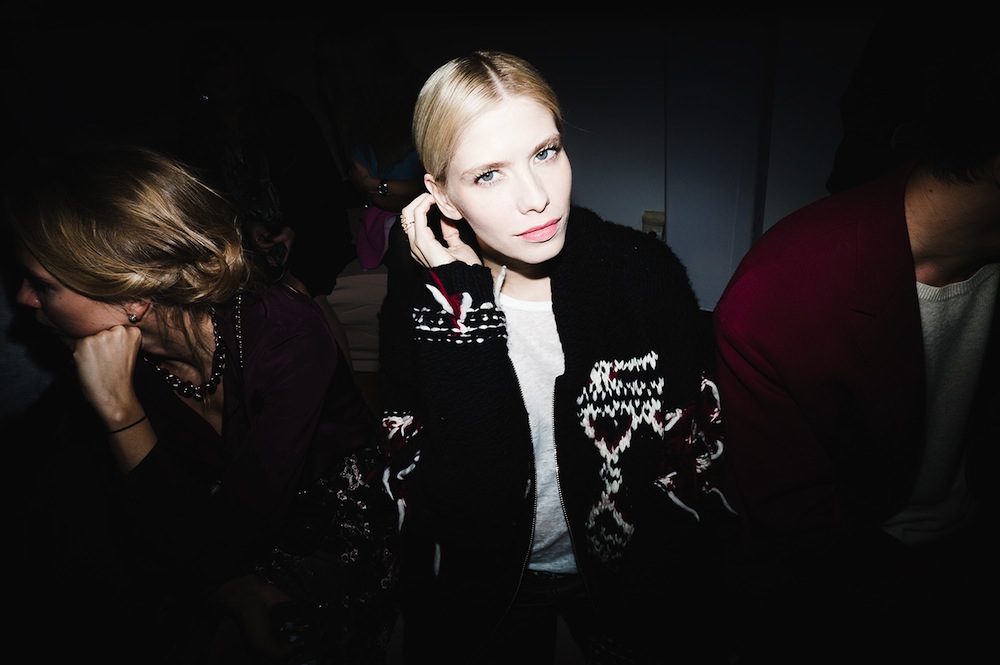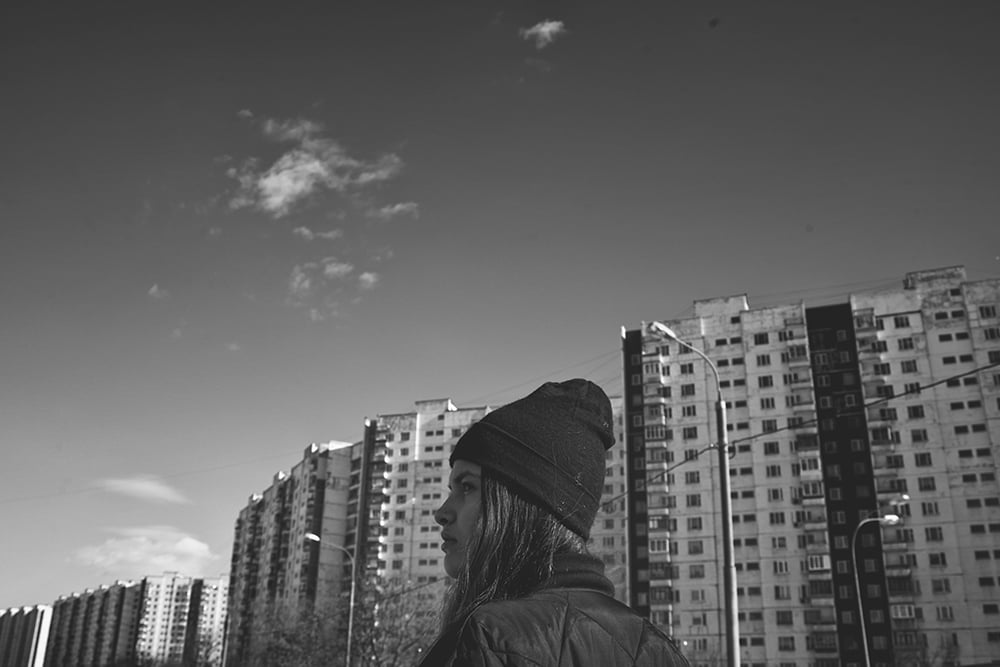Word up: how Cyrillic typography became the lingua franca for underground fashion
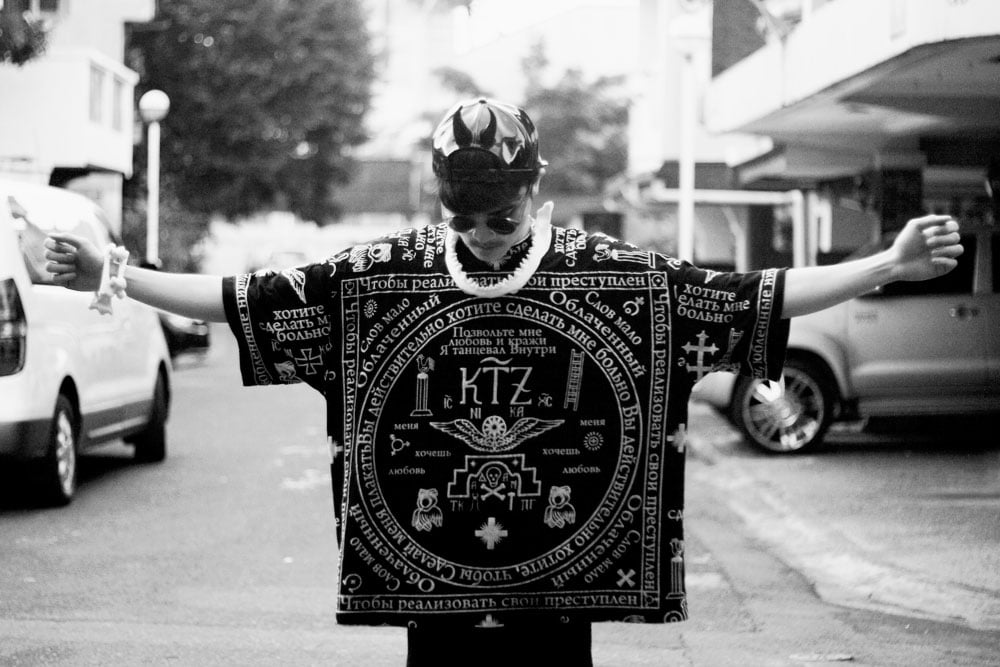
Flat, angular and heavy — the Cyrillic script may be alienating and intimidating but its strange beauty has ensured its popularity among contemporary cultural figures in fashion and music
It may be the language of a country with few international friends but Russian — at least in lettering — has never been so popular. Used by talented figures such as fashion designer Gosha Rubchinskiy and music acts Grimes and Dean Blunt, Cyrillic is increasingly becoming the lettering of choice for leading edge creatives.
Unlike the futuristic aesthetic of movie posters and video games in, say, Japanese, Cyrillic is a different, more lawless kind of exotic. Its international popularity was first sparked by Fuel Publishing’s Russian Criminal Tattoo book and it has since been adopted by designers and musicians in search of a rougher, less polished look. The lettering is generally seen on black clothing, with graphics referring to heavy metal bands or skate subcultures.
Cyrillic letters — flat, angular and heavy — are not loved for their beauty, but for being different, alienating and even slightly intimidating. From Google-proof album titles to codified T-shirt slogans, contemporary culture’s love of disruptive messaging is turning the Russian language into a new lingua franca for the underground.
Gosha Rubchinskiy
Russian designer Gosha Rubchinskiy uses the power of Cyrillic in a sneaky way. His popular T-shirt Рассвет не за горами (“Dawn is not far off”) is on sale at Liberty and Dover Street Market in London and features a mocking doppelgänger of classic skate brand Thrasher’s logo.
Heron Preston
The two-piece top created by designer and artist Heron Preston for London-based fashion video platform SHOWstudio looks like a sophisticated version of a metal band tour T-shirt. Пламя Волны (“Flames Waves”) is written over a sombre graphic inspired by John Hamilton Mortimer’s drawing Death on a Pale Horse in huge red letters. The black turtleneck is adorned with the Russian word, СТИЛЬ (“Style”).
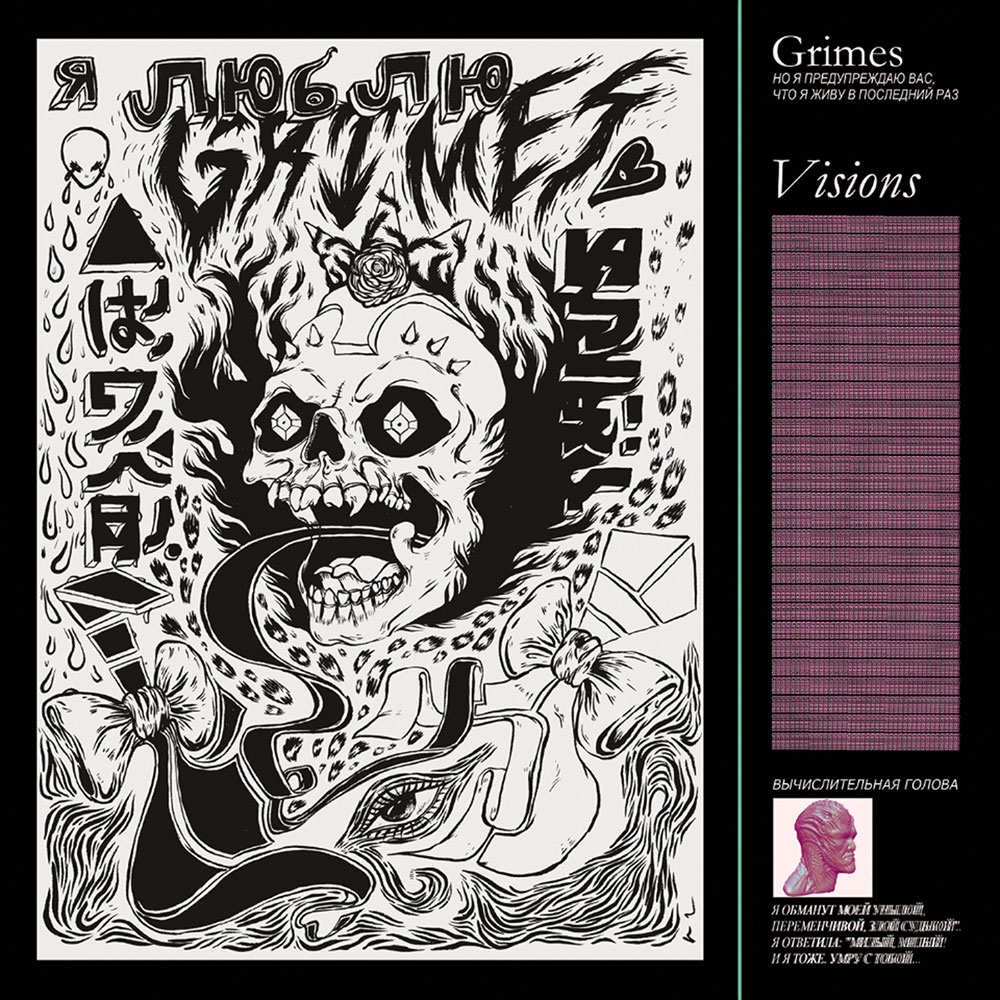
Grimes
Working on the cover of Visions, her third studio album, Canadian musician and artist Claire Boucher, aka Grimes, said she wanted to create “something very beautiful, and also very assaulting and violent, like the music”. The writing on top of her drawing says “I love” and a few lines on the right are also in Russian. “But I warn you that I’m living for the last time” on top and “Calculating head” alongside some poetry at the bottom.
KTZ
Kokon To Zai’s church print T-shirt features numerous lines in Russian that merge with Orthodox Christian-inspired graphics. The lines sound poetic — “Allow me love and stealing, I danced inside” — although they don’t make much sense. The London-based label is known for sophisticated designs based on occult symbols, ghetto tattoo fonts and various hieroglyphs. For KTZ, Russia might be just another exotic source of inspiration.
Mishka
NYC-based streetwear label МИШКА (“Little Bear”) was founded in 2003 with its name deliberately written in Cyrillic. Mishka’s popular T-shirt prints often feature a three-eyed roaring bear: yes, it’s meant to sow fear in its enemies’ hearts, although the brand’s use of Russian doesn’t expand much beyond it’s name.

Dean Blunt
London-based music producer Dean Blunt, formerly of the duo Hype Williams, recorded his latest album Каменный остров (“Stone Island”) in a Moscow hotel room during a trip to Russia in August 2013. Blunt decided that if the album — with its minimal black and white cover and Cyrillic track listing — was born in Russia, it should stay in Russia.
